Elysator - How It Works?
The function of the Elysator is based on the anodic/cathodic principle, i.e., letting a less noble metal (magnesium) be sacrificed (corroded)instead of the system itself, related to galvanic series/elements. During the process the oxygen in the water will be absorbed creating H2O and magnesium hydroxide. When the Elysator is installed, the entire system will be protected from corrosion. Even aluminium and aluminium alloys are protected.
WHAT HAPPENS?
Dilution of magnesium
Anode:
Mg(s) → Mg2+(aq) + 2e-
Cathode:
½O2 + H2O + 2e- → 2OH-
Total reaction:
Mg(s) + ½O2 + H2O → Mg (OH)2
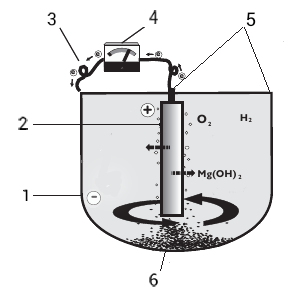
1 - Cathode
2 - Anode
3 - Folow of electrons
4 - Meter/Check
5 - Potential difference for steel/magnesium
6 - Impurities filtered out by suitable circulation
Dissolved oxygen O2
mg/l
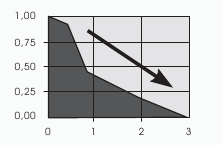
pH value
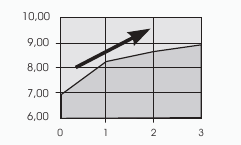
Electrical conductivity
μS/cm
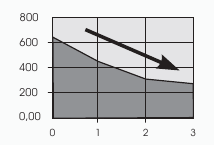
ADVANTAGES
- No chemicals
- Minimum maintenance
- Self regulating
- Kills and prevents growth of bacteria
- Savings in cost of chemicals and prevention of corrosion related failures
- Fast "Pay back"
- Improved water quality due to sludge and deposits removal
- Environmentally safe and meets ISO 1400 requirements
ILLUSTRATION
Typical values measured during the first month after installing the Elysator. On the engine cooling system of a 17 year old ship.
pH value
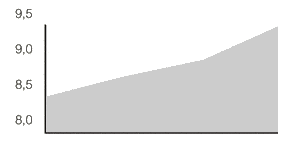
Conductivity
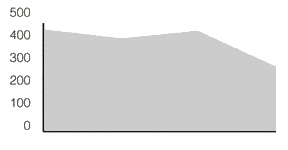
Iron
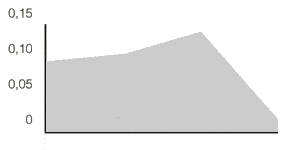
Copper
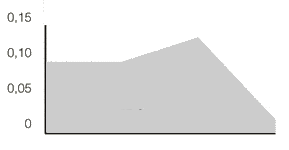
1. pH - Value
Corrosion is also due to acidic water. (low pH value, evaporated water normally holds a pH at aprox.5.5) The ELYSATOR system automatically regulates the pH value to approx. 9.5 (This is caused by splitting of magnesium hydroxide from the anodes).
2. Electrical Conductivity
100% pure water is non-conducting. It is important that electrical conductivity is kept as low as possible in order to avoid galvanic corrosion as well as to reduce the stress on pumps, gaskets, heat exchangers etc. The efficiency of the ELYSATOR is proportional to the conductivity, which means that the ELYSATOR is regulating itself in accordance to the condition in the water.
3. Deposits
Major parts of the deposits are oxides of Fe (iron) and Cu (copper). They are both a result of corrosion due to an oxygen surplus, low pH or a galvanic current. The amount of dissolved copper is a measure for the ongoing corrosion process in your system. Through the ELYSATOR the water will be neutralised and metallic surfaces stabilised. Corrosion is therefore eliminated and the water stays clear, clean and without sediments. The deposit sludge is simply removed by daily draining of the Elysator.






